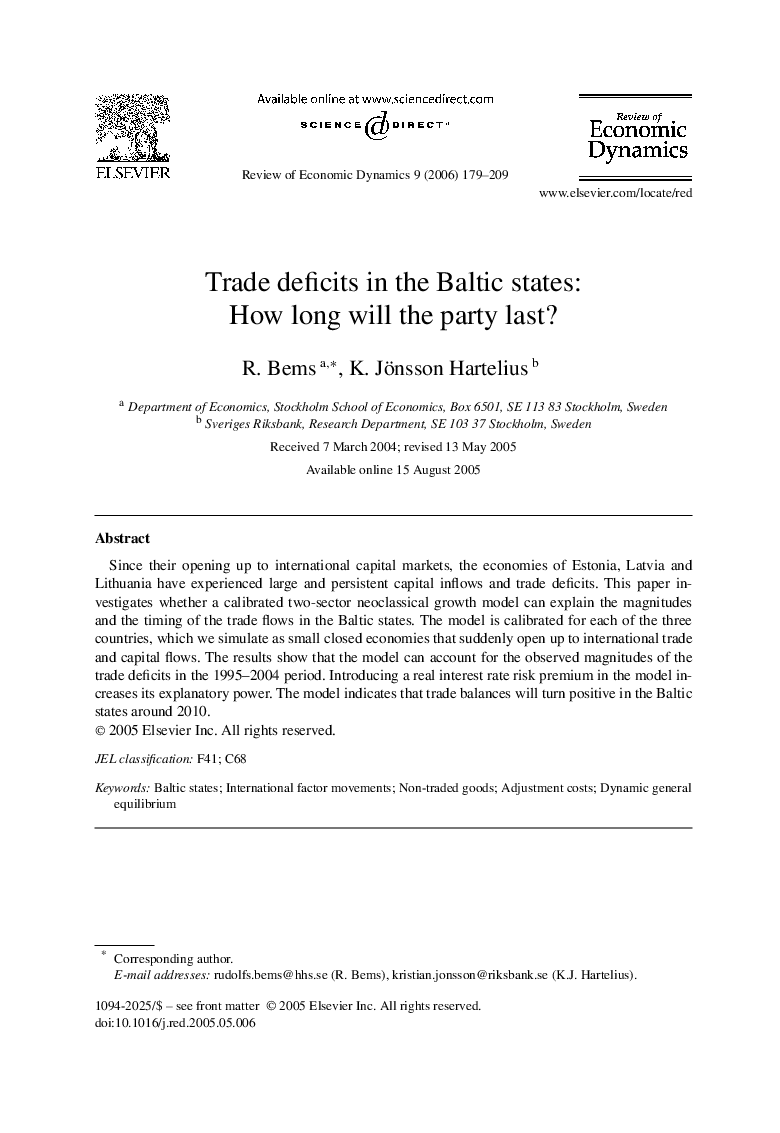| Article ID | Journal | Published Year | Pages | File Type |
|---|---|---|---|---|
| 986480 | Review of Economic Dynamics | 2006 | 31 Pages |
Abstract
Since their opening up to international capital markets, the economies of Estonia, Latvia and Lithuania have experienced large and persistent capital inflows and trade deficits. This paper investigates whether a calibrated two-sector neoclassical growth model can explain the magnitudes and the timing of the trade flows in the Baltic states. The model is calibrated for each of the three countries, which we simulate as small closed economies that suddenly open up to international trade and capital flows. The results show that the model can account for the observed magnitudes of the trade deficits in the 1995-2004 period. Introducing a real interest rate risk premium in the model increases its explanatory power. The model indicates that trade balances will turn positive in the Baltic states around 2010.
Related Topics
Social Sciences and Humanities
Economics, Econometrics and Finance
Economics and Econometrics
Authors
R. Bems, K. Jönsson Hartelius,
